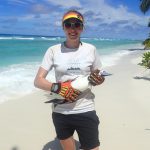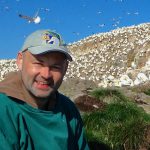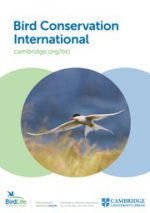The Importance of the Chagos Archipelago for Seabirds
Project Overview
The Chagos Archipelago, is home to 18 species of breeding seabird. They range in size from the large ocean-going greater frigate birds, to small coastal species, such as the lesser noddy. By studying them, we can observe and understand changes to the marine environment – such as changes in sea bird prey populations. Unfortunately, seabirds are the most threatened group of birds and are hugely impacted by human activities such as over-fishing, the introduction of invasive species and plastic pollution.
One possible way to help conserve these important species is to create large Marine Protected Areas (MPAs). However, for these to be effective they must include the areas which are most commonly used by the birds for breeding and foraging – which for many MPAs is still unknown or at least uncertain. The purpose of our work is to identify which areas are important to seabirds which breed in Chagos and whether these areas are included in the extent of the MPA.
To conduct this research, our science team spends several weeks on uninhabited islands in the Chagos Archipelago where our study species – red-footed boobies and brown boobies – pair-up to breed and raise their chicks. By attaching low-weight tracking devices to the birds tail feathers we are able to find out where in the Indian Ocean the birds go to feed, and what parts of the MPA they visit.
Red Footed Boobies can spend days out at sea foraging for food to feed their chicks. Finding out where they go to will help us work out how effective the MPA is at protecting these important birds.
Key Facts

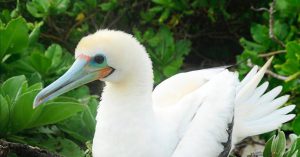

News
Publications
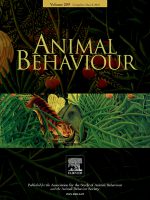
Homing Navigation is Optimized to Diurnal Constraints in a Tropical Seabird, the Red-Footed Booby
Coste, J., Votier, S.C., Dunn, R.E., Freeman, R., Nicoll, M.A., Carr, P., Wood, H., Trevail, A.M. (2025). Homing navigation is optimized to diurnal constraints in a tropical seabird, the red-footed booby. Animal Behaviour.

Sub-Colony Variation in Foraging Behaviour and at-Sea Distribution of a Breeding Tropical Seabird and Consequences for Marine Spatial Planning
Nicoll, M. A.C., Jaeger, A., Hector, A., Letori, J., Rocamora, G., Le Corre, M. (2024). Sub-colony variation in foraging behaviour and at-sea distribution of a breeding tropical seabird and consequences for marine spatial planning. Marine Biology

Comparable Foraging Effort and Habitat Use Between Two Geographically Proximate Tropical Seabird Colonies
Trevail, A.M., Vallocchia, S., Nicoll, M.A.C., Carr, P., Votier, S.C., Wood, H., Freeman, R. (2024). Comparable foraging effort and habitat use between two geographically proximate tropical seabird colonies. Marine Biology.

Geolocation and Immersion Loggers Reveal Year-Round Residency and Facilitate Nutrient Deposition Rate Estimation of Adult Red-Footed Boobies in the Chagos Archipelago, Tropical Indian Ocean
Votier, S.C., Corcoran, G., Carr, P., Dunn, R.E., Freeman, R., Nicoll, M.A.C., Wood, H., Trevail, A.M. (2024). Geolocation and immersion loggers reveal year-round residency and facilitate nutrient deposition rate estimation of adult red-footed boobies in the Chagos Archipelago, tropical Indian Ocean. Journal of Avian Biology.

From Route to Dive: Multi-Scale Habitat Selection in a Foraging Tropical Seabird
Dunn, R.E., Freeman, R., Nicoll, M.A., Ramsden, J., Trevail, A.M., Wood, H., Votier, S.C. (2024). From route to dive: multi-scale habitat selection in a foraging tropical seabird. Marine Biology.


